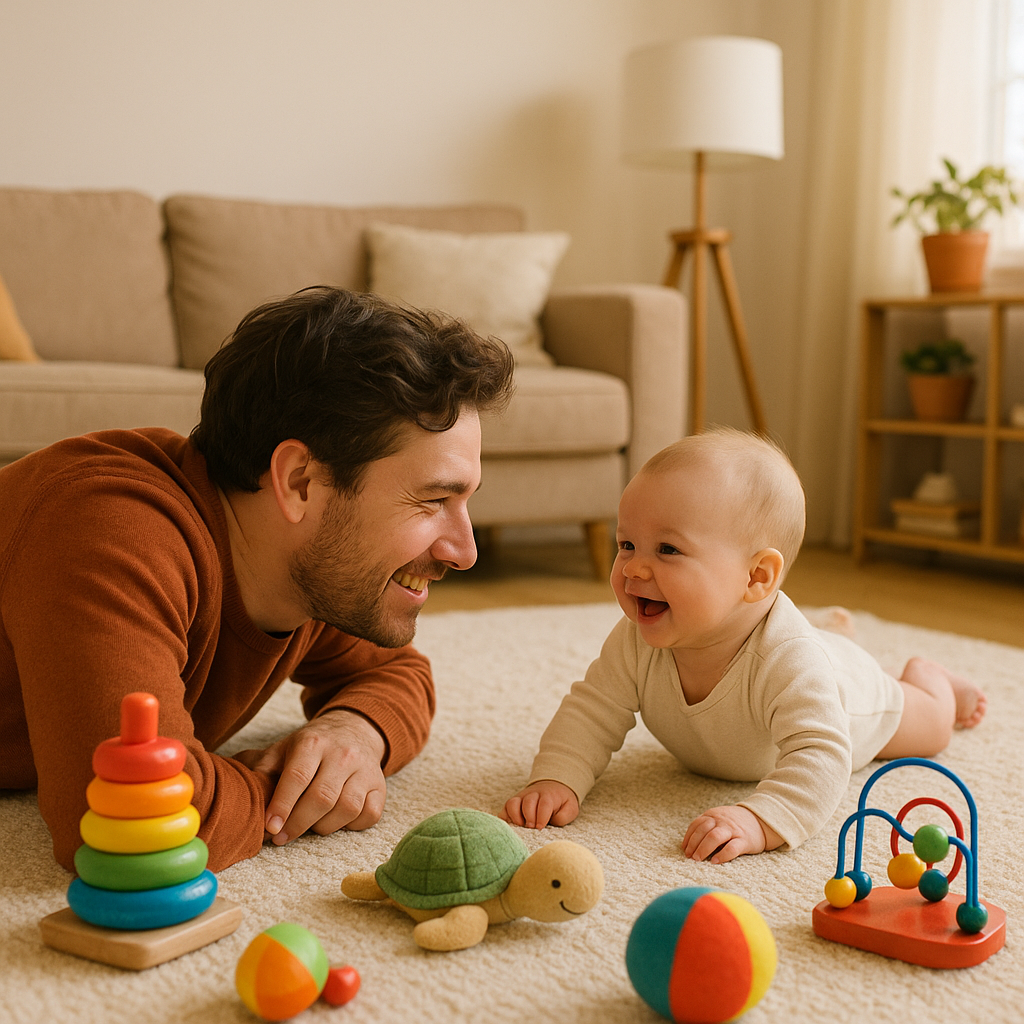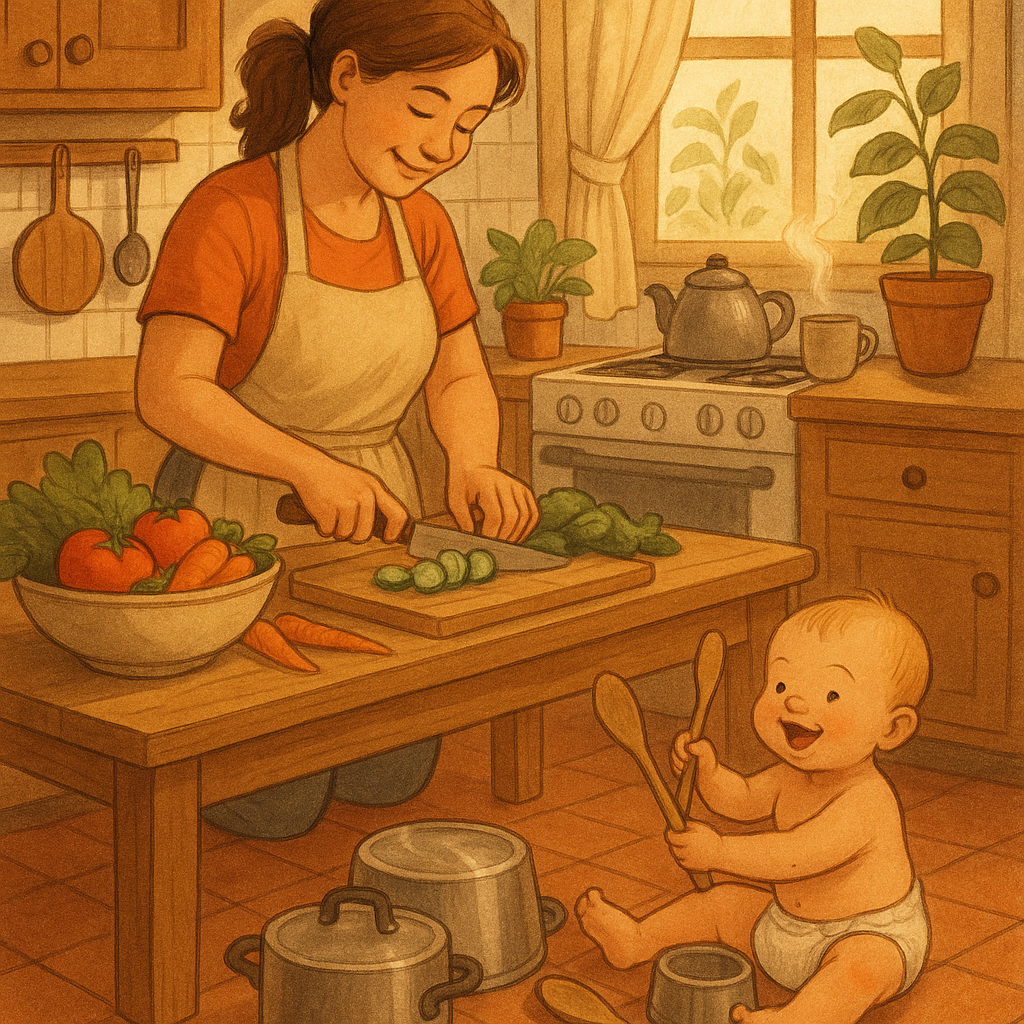By age 2, the average child racks up about 767 hours of screen time—over a month of continuous watching—according to the 2025 Common Sense Media Census. Yet, research shows babies learn up to three times faster through hands-on play and face-to-face interaction than from screens. Swap cartoons for cuddles, chats, and curiosity-driven exploration to spark your child’s brain for lifelong learning and stronger family bonds.
- Why does cutting screens supercharge your baby’s brain development?
- How can you set up a home that makes screens forgettable?
- What low-cost, screen-free activities fit each age stage?
- 0–6 Months: Building Sensory Foundations
- 6–12 Months: Exploring the World
- 12–18 Months: Growing Independence
- 18–24 Months: Problem-Solving and Pretend Play
- How can busy parents keep routines screen-free without burning out?
- What special tips help stressed or resource-tight families stay screen-free?
- Your Top Questions, Answered
- How will your family feel after making the switch?
Why does cutting screens supercharge your baby’s brain development?
Early screen exposure steals interaction time that brains need. Babies’ brains triple in size during the first year and rely on multisensory, back-and-forth engagement to build neural networks. Research highlights:
- Infants who watch more than 2 hours of video daily are six times more likely to show language delays as per Television viewing and language development.
- Background TV reduces parent-child speech by about 770 words per hour, shrinking vocabulary growth as noted in Background TV and speech.
- Excessive TV viewing is associated with increased obesity risk in preschool children, with some studies suggesting a significant correlation as in TV and obesity in children.
Enriched, screen-free moments—eye contact, touch, varied sounds, safe movement—activate mirror neurons, strengthen the gut-brain axis, and train executive functions like focus and self-regulation.
Looking for balance? Explore how Overstimulation vs. Boredom shapes neural growth.

How can you set up a home that makes screens forgettable?
Remove the visual trigger and offer irresistible alternatives. When devices disappear from sight, out-of-mind follows. Practical tweaks:
- Designate tech-free zones: bedrooms, dining table, stroller.
- Create a “yes space” filled with open-ended toys; rotate items weekly for novelty.
- Dock phones in a closed charging station near the door.
- Hide the TV behind a cabinet—families report fewer show requests.
- Add sensory nooks—soft rugs, sturdy mirrors, movement mats—for vestibular play.
Need room-by-room ideas? See Creating a Brain-Boosting Home.
What low-cost, screen-free activities fit each age stage?
Everyday objects spark big developmental wins. Simple, hands-on play beats flashy gadgets by engaging your baby’s senses and boosting skills. See American Academy of Pediatrics. For neuro-diverse babies, consider adding textured or chewy toys to suit sensory needs.
0–6 Months: Building Sensory Foundations
At this stage, babies learn through sight, sound, and touch, wiring their brains for early connections.
- Face mirroring and exaggerated sounds: Mimic your baby’s expressions and use silly voices to boost emotional bonding and early language skills.
- High-contrast cards for visual tracking: Black-and-white patterns help sharpen vision and focus, critical for brain development.
- Gentle infant massage with narration: Massage with soothing words promotes relaxation and language exposure.
- Tummy-time “treasure circle”: Arrange safe household items (e.g., soft cloths, wooden spoons) to encourage reaching and motor skills.
6–12 Months: Exploring the World
Babies start moving and understanding cause-and-effect, perfect for sensory and cognitive play.
- DIY sensory bags: Fill zip bags with water and glitter for safe, squishy exploration of textures and colors.
- Splash play in a shallow basin: Water play builds fine motor skills and sensory awareness.
- Peek-a-boo with scarves: Teaches object permanence, helping babies understand things exist when hidden.
- Rolling a ball back and forth: Encourages coordination and social interaction, laying groundwork for communication.
12–18 Months: Growing Independence
Toddlers love to move and mimic, strengthening spatial and language skills.
- Kitchen-band music sessions: Bang pots with wooden spoons to boost rhythm and motor coordination.
- Couch-cushion crawling tunnels: Crawling through cushions enhances gross motor skills and problem-solving.
- Large-block stacking: Builds spatial reasoning and hand-eye coordination for early math skills.
- Simple sign-language songs: Pair gestures with songs to spark language bursts and communication.
18–24 Months: Problem-Solving and Pretend Play
Toddlers thrive on independence and imagination, perfect for early math and social skills.
- Pretend-kitchen chores: Rinsing veggies or “washing” plastic dishes fosters fine motor skills and role-play.
- Backyard nature hunt: Collect five textured treasures (e.g., leaves, pebbles) to sharpen sensory and observation skills.
- Sorting socks by color: Introduces early math concepts like categorization and patterns.
- Watering plants with a small pitcher: Practicing pouring builds coordination and responsibility.
For more play ideas, dive into Baby-Led Play.
How can busy parents keep routines screen-free without burning out?
Anchor predictable rituals and use audio, not video, for breaks. Energy-saving tactics:
- Start and end each day with a five-minute cuddle + song—predictability calms brains.
- Swap cartoons for a family playlist or a Storypod track while prepping dinner.
- Wear your baby in a carrier during chores; narrate each step for built-in language lessons.
- Keep a “grab-bag” of portable toys by the couch for tired moments.
- Trim your own scrolling—research indicates that reducing parental screen time can increase parent-child verbal interactions, supporting language development. See Parent-child talk and screens.
For schedule templates, visit Baby Routines: Do They Boost Brain Development?.

What special tips help stressed or resource-tight families stay screen-free?
Creativity, not cash, fuels development. Tool-free play kit:
- Cardboard boxes = tunnels, cars, puppet theaters
- Scarves or dish towels for peek-a-boo and dancing
- Plastic containers for stacking, nesting, or drumming
- Old magazines for tearing (fine-motor gold)
- Empty water bottles with rice for shaker instruments
Quick parent resets:
- Take a 60-second body scan or three deep sighs before engaging—lower cortisol helps you respond, not react. Read more in Parental Stress: How It Impacts Your Baby’s Brain.
Inclusivity cues:
- Neuro-diverse babies may enjoy chewy, textured toys and slow-moving light projectors (no flashing screens).
- Sing lullabies in your heritage language to double up on bonding and linguistic richness.
Your Top Questions, Answered
-
Is any screen safe for babies under 2?
Yes—occasional live video chats are acceptable. Keep sessions under 15 minutes, sit beside your baby, and talk about what they see to maintain interaction. -
How do I handle grandparents who turn on the TV?
Provide an activity bag and share the AAP one-pager. Offer books, bubbles, or a mini photo album of family faces to redirect attention while politely explaining your screen plan. -
Will my child fall behind on tech skills later?
No. Tech skills catch up within weeks. Schools teach device basics quickly, while early language and self-control—built through screen-free play—predict long-term success. -
What if we slip up and binge a cartoon marathon?
Do a one-week digital reset and restart routines. Consistency, not perfection, shapes habits. Replace the next viewing slot with a high-energy outside activity to break momentum.
For a balanced approach to occasional media, see Safe Screen Time: Educational Media for Babies.
How will your family feel after making the switch?
Trading screens for real-world wonder delivers faster language growth, stronger motor skills, deeper sleep, and richer family connection. Ready to start? Download a printable day plan at Daily Routine for a Brain-Boosted Baby and watch curiosity bloom—no subscription, battery, or charger required.